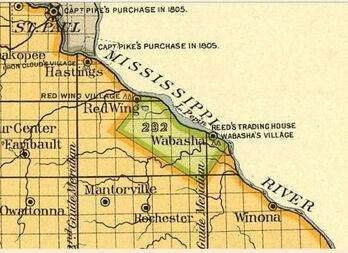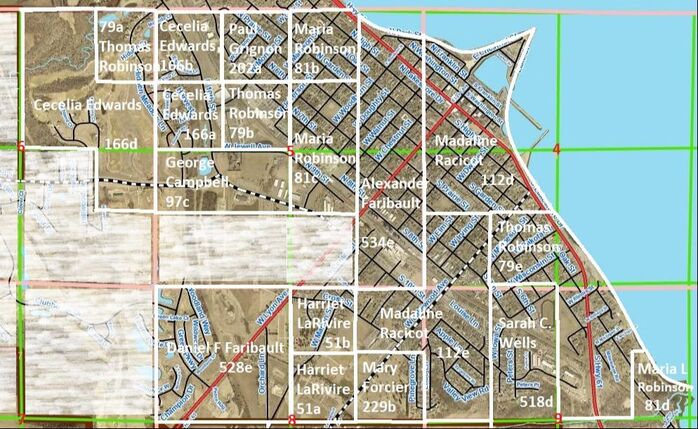"Half-Breed Tract"
A Reservation Created by Treaty in 1830
Dakota people, pressed by the U.S. Government to cede land they held in Wisconsin, signed a treaty in 1830 that included a provision creating an Indian Reservation at Lake Pepin. It was intended to be the home, into perpetuity, of the mixed heritage descendants of traders and their Dakota wives. The reservation extended downriver from present-day Red Wing to Kellogg, and inland 15 miles from the shore of Lake Pepin.
The treaty did not stop settlers and land speculators from claiming ownership of reservation land. To resolve the matter, a plan was made to identify all eligible Dakota persons and give them them scrip, coupons granting each bearer rights to 480 acres within the tract, or anywhere else in the Public Domain.
Although the scrip was supposedly non-transferable, settlers and land speculators found the tract to be a mere complication in eventually acquiring most of the land. Some paid off the men who were related to the Dakota persons who were eligible for scrip. General Shields, appointed by the U.S. Government to carry the scrip documents from Washington, D.C., arrived in Wabasha on March 23, 1857. The next day, he began distributing scrip to 638 eligible persons, or to their husband or father if they were a married woman or under the age of 21.
The treaty did not stop settlers and land speculators from claiming ownership of reservation land. To resolve the matter, a plan was made to identify all eligible Dakota persons and give them them scrip, coupons granting each bearer rights to 480 acres within the tract, or anywhere else in the Public Domain.
Although the scrip was supposedly non-transferable, settlers and land speculators found the tract to be a mere complication in eventually acquiring most of the land. Some paid off the men who were related to the Dakota persons who were eligible for scrip. General Shields, appointed by the U.S. Government to carry the scrip documents from Washington, D.C., arrived in Wabasha on March 23, 1857. The next day, he began distributing scrip to 638 eligible persons, or to their husband or father if they were a married woman or under the age of 21.
All land in within the original boundary of Lake City was acquired from the Public Domain using the instrument of scrip. By the end of 1859, all the land titles in Lake City were legally settled.

